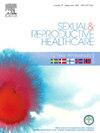产后创伤后应激症状与母婴关系:一项基于人群的横断面研究
IF 1.7
3区 医学
Q3 PUBLIC, ENVIRONMENTAL & OCCUPATIONAL HEALTH
引用次数: 0
摘要
目的:产后创伤后应激症状与女性心理健康的负面结果相关,并可能破坏母婴关系的发展。然而,之前的研究报告的结果并不一致。目的是在以人群为基础的样本中,研究产后创伤后应激症状对出生后6至12周母婴关系的预测作用。方法这项基于人群的横断面研究于2022年进行,包括598名产后6至12周的妇女。采用城市分娩创伤量表测量产后创伤后应激症状,采用产后依恋问卷评估母婴依恋。在调整了母亲年龄、胎次、出生方式、教育程度和抑郁症状等因素后,采用线性回归分析检验创伤后应激症状与母婴关系之间的关系。结果城市分娩创伤量表的平均得分为8.4分,产后依恋问卷的平均得分为5.5分。总共有1.5%的参与者在明显的联系困难上得分高于临界值。较高水平的产后创伤后应激症状与更大的结合困难显著相关(B = 0.380, p < 0.005)。在调整背景变量和抑郁症状后,这种关联仍然显著(B = 0.113, p = 0.007)。初产、高等教育程度和抑郁症状也与结合困难显著相关(p < 0.05)。结论产后创伤后应激症状对母婴关系的发展有负向影响。建议有针对性地筛查创伤后应激症状和结合困难,然后在产后护理中提供适当的支持。本文章由计算机程序翻译,如有差异,请以英文原文为准。
Postpartum post-traumatic stress symptoms and mother-infant bonding: A population-based cross-sectional study
Objective
Postpartum post-traumatic stress symptoms are associated with negative outcomes for women’s mental health and may disrupt the development of the mother–infant bond. However, previous research has reported inconsistent findings. The aim was to examine the predictive role of postpartum post-traumatic stress symptoms on mother–infant bonding 6 to 12 weeks after birth in a population-based sample.
Method
This population-based cross-sectional study was conducted in 2022 and included 598 women 6 to 12 weeks postpartum. Postpartum post-traumatic stress symptoms were measured using the City Birth Trauma Scale, and mother–infant bonding was assessed with the Postpartum Bonding Questionnaire. Linear regression analysis was used to examine the association between post-traumatic stress symptoms and mother–infant bonding, adjusting for maternal age, parity, mode of birth, educational level, and depressive symptoms.
Results
The mean score on the City Birth Trauma Scale was 8.4, and 5.5 on the Postpartum Bonding Questionnaire. A total of 1.5 % of participants scored above the cut-off for significant bonding difficulties. Higher levels of postpartum post-traumatic stress symptoms were significantly associated with greater bonding difficulties (B = 0.380, p < 0.005). This association remained significant after adjustment for background variables and depressive symptoms (B = 0.113, p = 0.007). Primiparity, higher educational attainment, and depressive symptoms were also significantly associated with bonding difficulties (p < 0.05).
Conclusion
The findings suggest that postpartum post-traumatic stress symptoms negatively affect the development of the mother–infant bond. A targeted screening of post-traumatic stress symptoms and bonding difficulties is recommended, followed by appropriate support in postpartum care.
求助全文
通过发布文献求助,成功后即可免费获取论文全文。
去求助
来源期刊

Sexual & Reproductive Healthcare
PUBLIC, ENVIRONMENTAL & OCCUPATIONAL HEALTH-
CiteScore
2.70
自引率
5.60%
发文量
73
审稿时长
45 days
 求助内容:
求助内容: 应助结果提醒方式:
应助结果提醒方式:


